
Tour De Fleece 2025
Hello friends,
The month of July is known to yarn spinners all over the world as Tour De Fleece month, where spinners who want to join in, prepare their spinning supplies and spinning wheels for spinning along beside the Tour De France. On the days that the cyclists spin their wheels, so do Tour De Fleece spinners. It's an online spin-along, and spinners from all over the world often share their spinning on social media platforms like Instagram, YouTube, and Ravelry, during the 21 days of the Tour De France.
You don't need to officially sign up to anything, or pay any money, or join a team (though some people do), just spin when you can during the Tour De Fleece and make whatever yarn that appeals to you. My goal this year was just to spin every day of the Tour De Fleece, using whatever roving and fleece I had in stash, using both my drop spindle and spinning wheel.
The first project I spun up was a 100 gram roving of Union Fibre's fine Haunui breed sheep in shades of pink, purple, yellow, green, brown and teal.
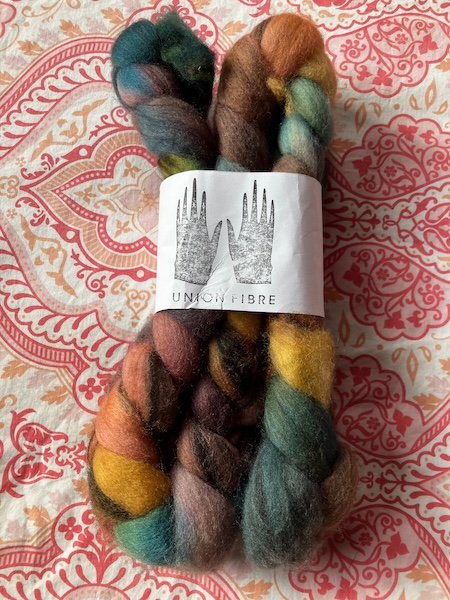
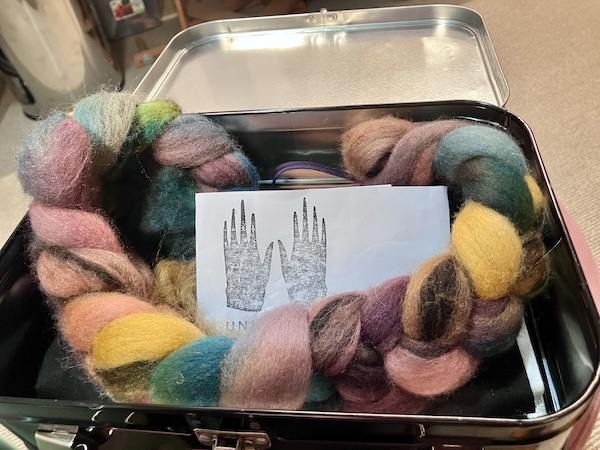
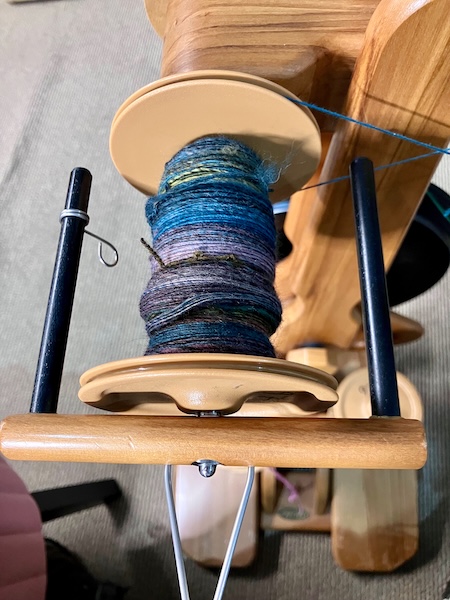
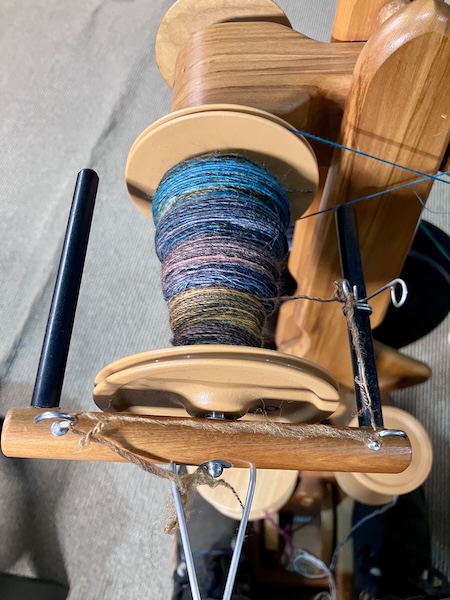
I spun up the singles on my Majacraft Suzie Pro on two bobbins, with the intention to make a 2 ply yarn. The plied yarn was so pretty, coming out at an approximately fingering weight/4 ply yarn with a total of 237 m of yarn. I don't have any plans for this yarn yet, so it'll just go into storage along with all my other spun yarn.
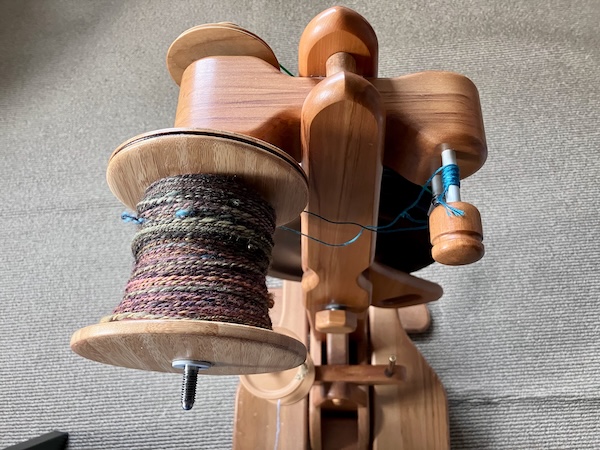
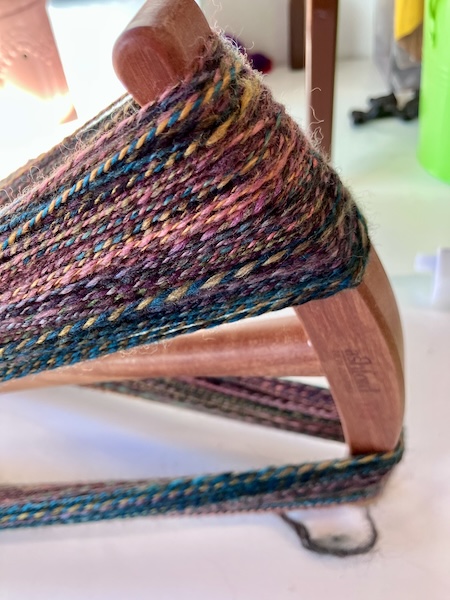
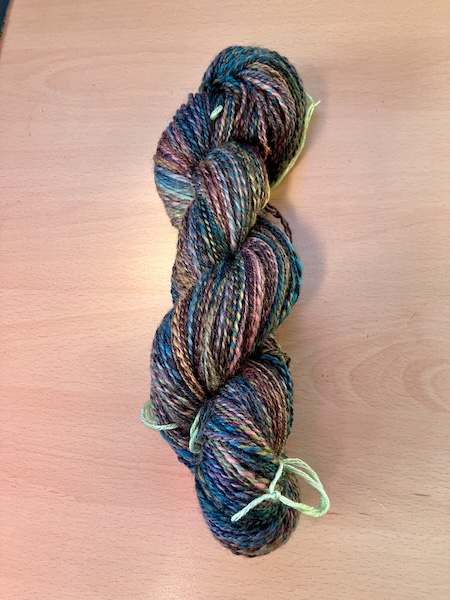
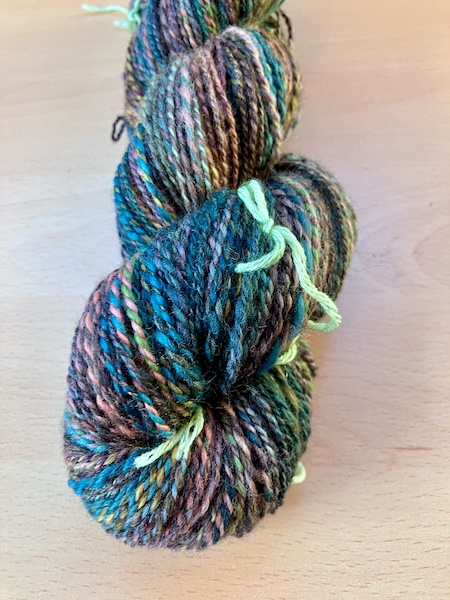
Next up to spin was 200 grams of Ashford 80% Merino/20% Mulberry Silk roving in the colourway Gelato. I just love to periodically spin up some of Ashford's beautiful colourways for fun, with the intention to use the spun yarn for handwoven and handspun scarves for my Felt store Hearth and Oak.
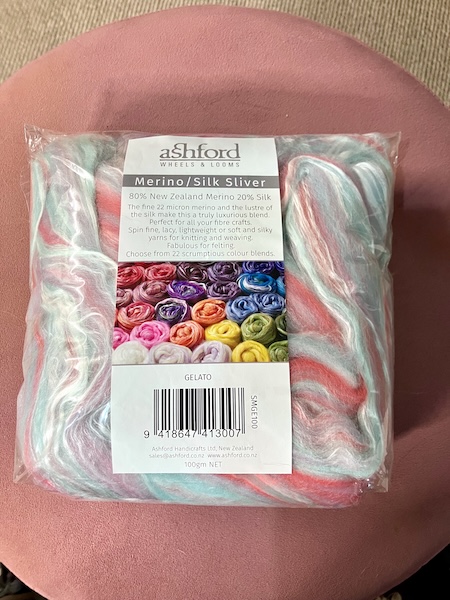
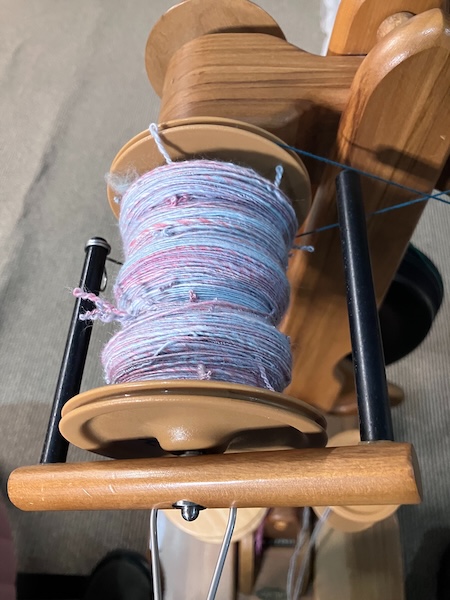
Once the two single bobbins were spun, it was time to ply them 2-ply style. The resulting yarn was approximately fingering weight/4 ply and had a length of 423 m.
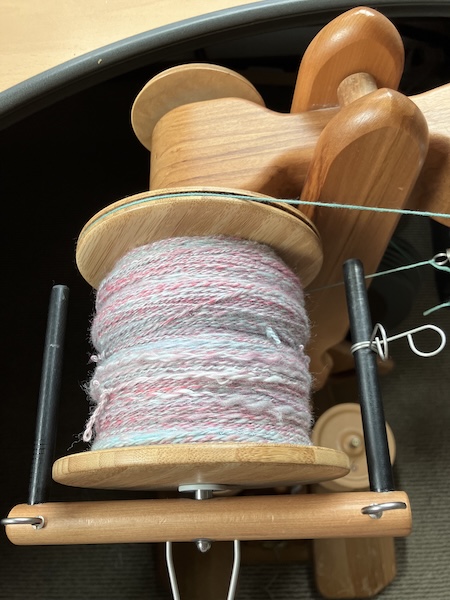
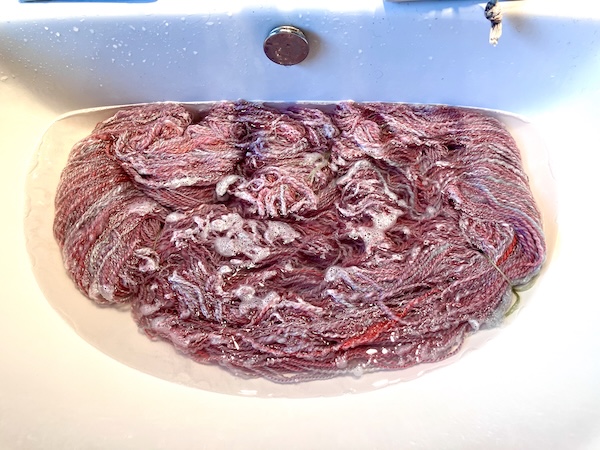
After a quick warm soak to set the twist in the yarn, my gelato yarn was all finished and ready for weaving.
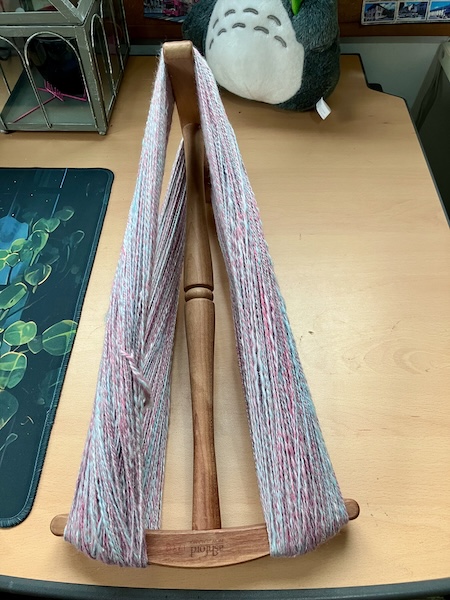

I just love the shades of blue, pink and white, and I think it'll make a pretty nice scarf when it's all woven up.
I just loved making so much time for spinning in July, it's such a cold month and it's really cozy to spin on my spinning wheel on freezing winter nights. I already look forward to next Tour De Fleece next year.
Have a wonderful day
Julie-Ann
Want to discuss my post? Feel free to chat with me on Instagram or Mastodon or Bluesky.
Random Farm's Tilda and Biscuit Fleece Project - Washing and Storing
Hello friends,
Yes, I went and bought two more raw fleeces, but in my defense, it was only 500 grams of fleece each. I saw a social media post from Random Farm in April announcing the release of their raw fleeces after they'd been taken to the 2025 National Black and Coloured Sheep Breeders Association Competition. After searching through the photos of their fleeces available, I was really tempted by two raw fleeces, from the sheep Tilda and Biscuit, so I bought 500 grams of each of them.
First up we have Tilda the sheep, who is a silver grey pure-bred Romney, with fleece of 34 microns across and a staple length of 13 cm. Her fleece came second in the Strong Handcraft Fleece section at the National Black and Coloured Sheep Breeders Association Competition in 2025.
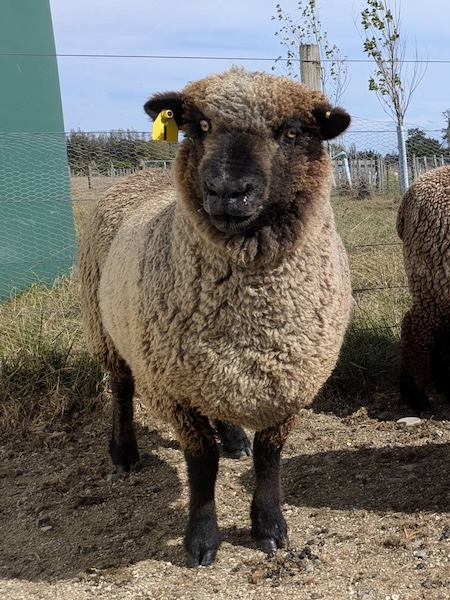
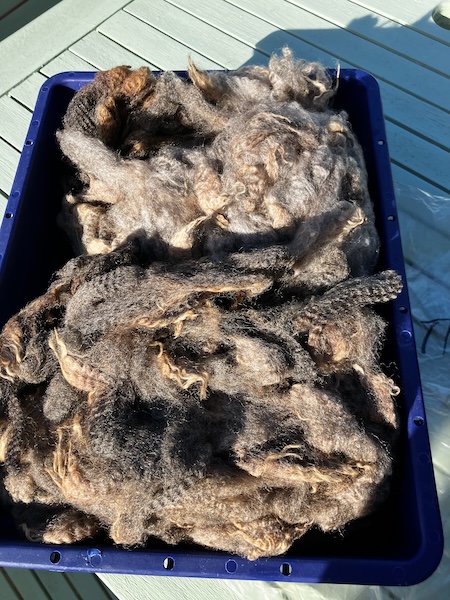
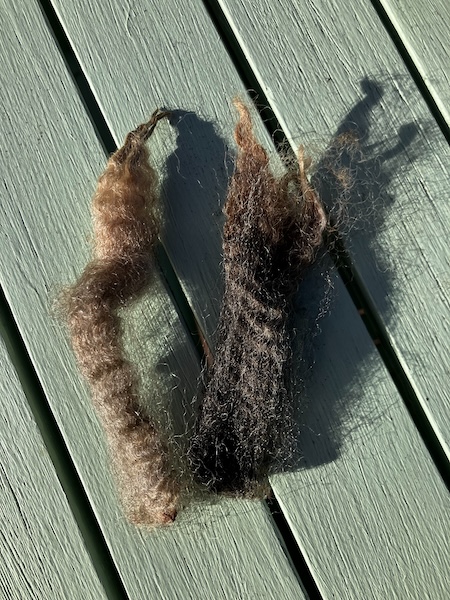
With her fleece I scoured it using my previous method of scouring wool using Unicorn Scour Power, but this time I used a new drying method.
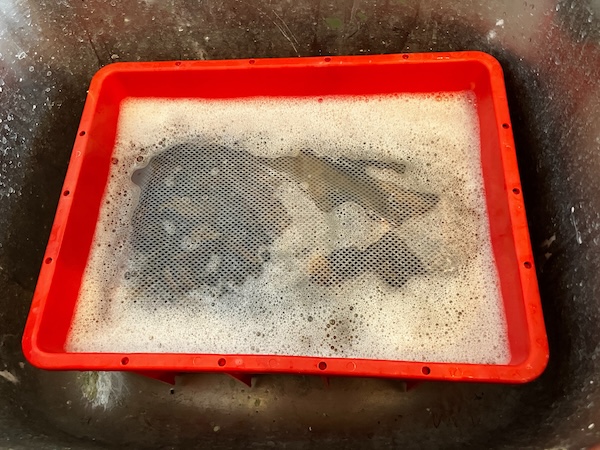
Usually I put scoured fleeces into plastic trays to dry while outside, but I have the problem of fleece trying to blow away in high winds, and also when I bring it inside Missy and Rosie cats think of them as warm and fluffy cat beds. I saw a social media post a while ago of someone using a foldable fish drying mesh rack to dry fleeces and yarn, so I was interested in buying one, and I eventually found it on Temu after I couldn't find any for sale locally in New Zealand. I opted for the four tier rack with zip closures as it gave me many options for drying fleece, fibre, and yarn. It also folds down into a very small space for storage.
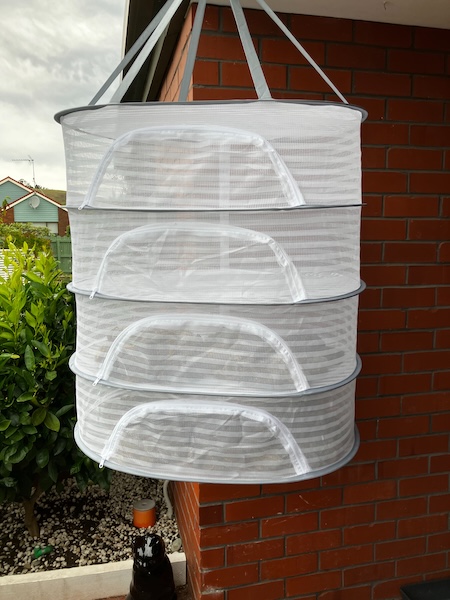
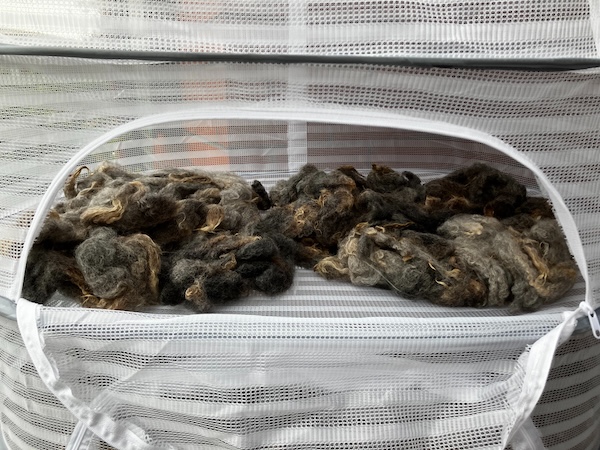
And the new system works great for both outside the house, and also for hanging inside near the fireplace on cold nights. It didn't take very long at all to dry, hung up safe from both winds and cats. A quick flick carding of Tilda's dried fleece shows a nice clean and long staple with great crimp in the fleece.


Biscuit the sheep is a silvery-grey romney/corriedale fleece, with romney lustre and corriedale softness. Her fleece was shorn when she was 18 months old, so this is her two-tooth fleece, at 31 microns and a staple length of 14 cm. Biscuit's fleece came 4th in the Mature Strong Handcraft Fleece section at the National Black and Coloured Sheep Breeders Association Competition in 2025.
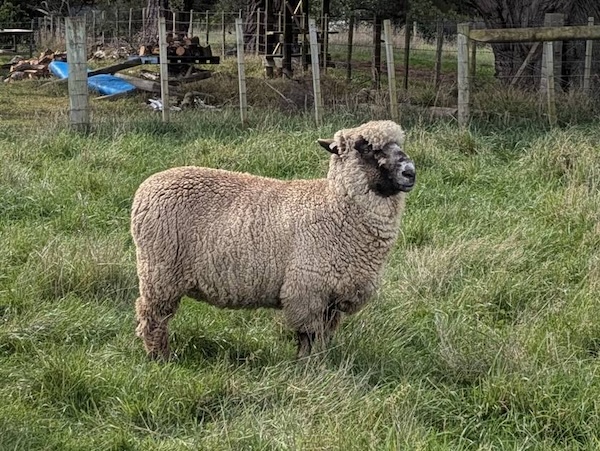
Random Farm suggests spinning this fleece semi-worsted/worsted style, which require wool combs to align all the fleece in the same direction. I have actually have a set of wool combs ordered from Majacraft, but I'm waiting for them to arrive so I can try this method of fleece preparation.
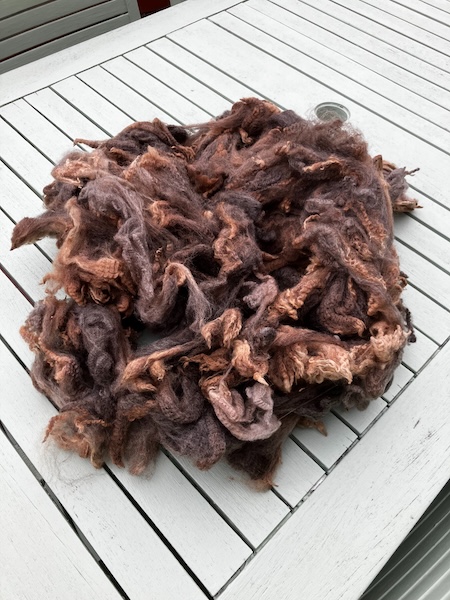
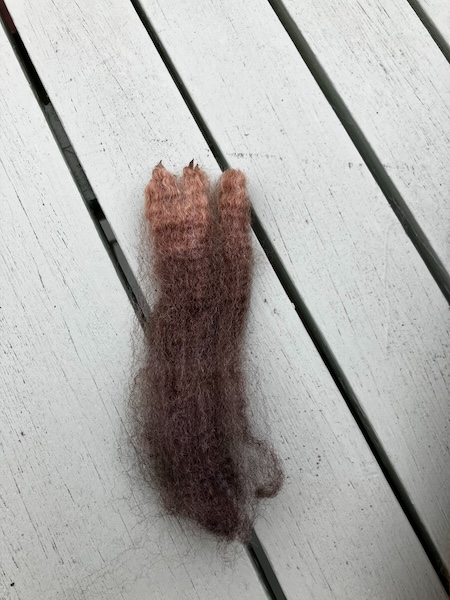
When dried I flick carded a lock of Biscuit's scoured and washed fleece, and it turned out just beautiful, with two toned colours on a long staple. I'm looking forward to using my new wool combs with this fleece when they arrive.

With four scoured and clean fleeces now in storage, I will not buying any more fleece for quite a while. The next step for all these fleeces is to process them for spinning, by either drum carding them, or using my wool combs.
And I just wanted to say a big thank you to Random Farm, who gave me permission to use their photos of Tilda and Biscuit the sheep in this blog post. Please check out Random Farm's Facebook and Felt pages to see all their lovely fleece available.
There won't be a blog post next Thursday, as I'm having cataract surgery on my left eye next Wednesday. I am planning on posting a blog a week after that if all goes to plan.
Have a wonderful day.
Julie-Ann
Want to discuss my post? Feel free to chat with me on Instagram or Mastodon or Bluesky.
May Handmaiden Spinning Fibre Club
Hello friends,
Today I'd like to share with you my May Handmaiden Spinning Fibre Club subscription, and how it looks now all spun up.
May's Handmaiden Fibre club, in autumnal shades of white, brown, orange and red, arrived all prettily wrapped up in tissue paper, and contained 100 grams of 80% machine-washable wool/20% nylon, a small plastic sock stitch marker, and a pattern for making Tinker Bell slippers. I decided to spin it up fine so I could make socks, so I broke the fibre braid in half to make a 2-ply, and then pulled out my trusty rimu drop spindle and got to work.
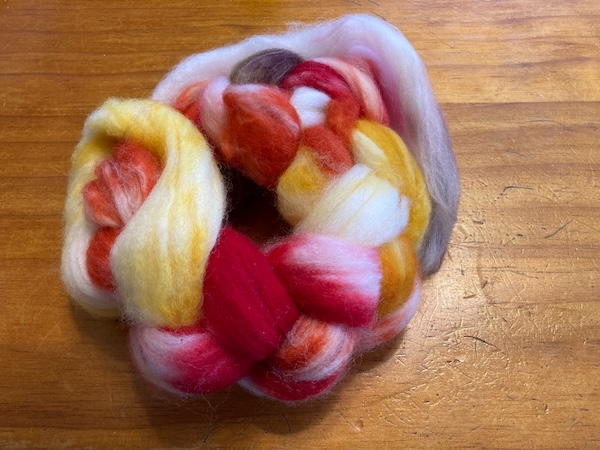
I love spinning with my drop spindle, because it's the easiest way to spin up super fine yarn for making socks, and it also increases the spinning time, which I find very relaxing. It took me a couple of weeks to spin up the two fine singles, and I loved the slow changing autumnal colours on my drop spindle as I spun.
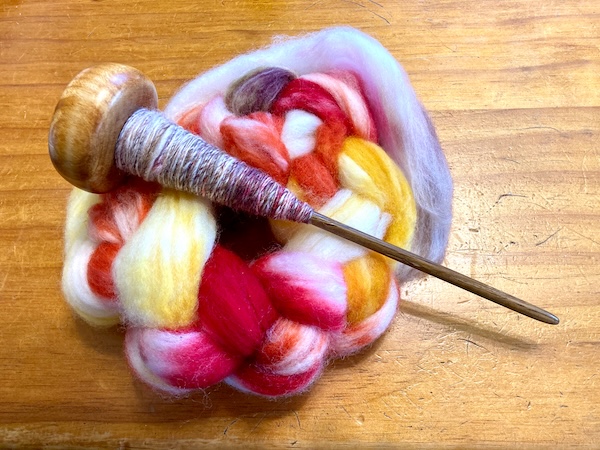
I transferred the singles of yarn off the drop spindle and onto two spinning wheel bobbins for plying. Once that was done it didn't take very long at all to ply up the resulting 2 ply yarn on my Majacraft Suzie Pro spinning wheel. I prefer plying on my spinning wheel, as my drop spindle can't handle large amounts of plied yarn.
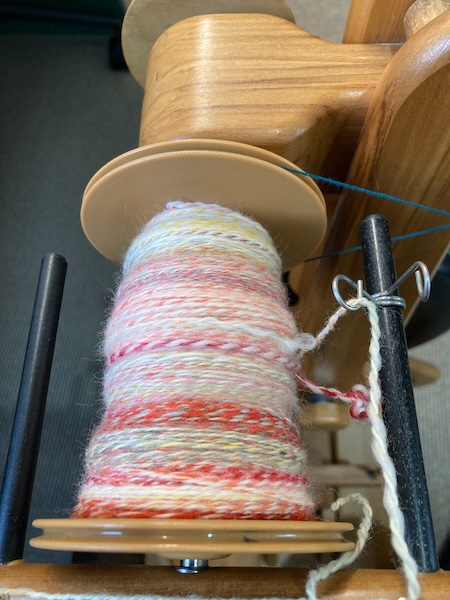
The plied yarn was in general fingering weight, and the autumnal colours were very pretty. After the plied yarn rested for a couple of days, I set the yarn by washing it in luke-warm soapy water.
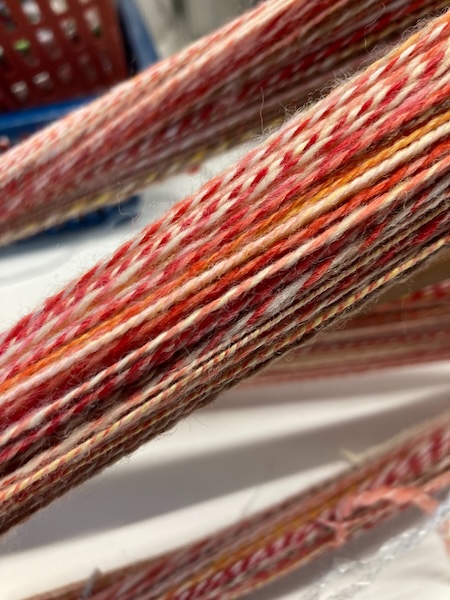
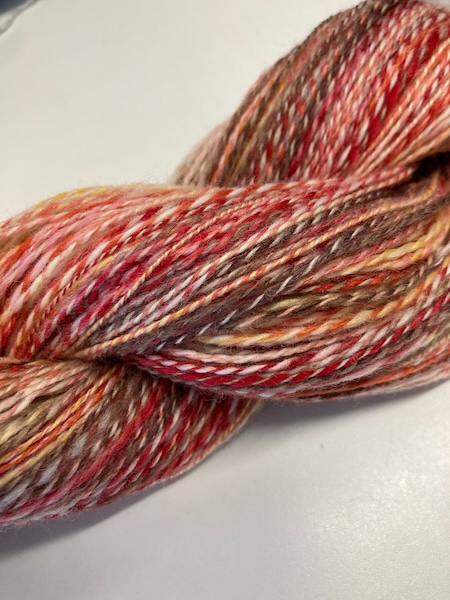
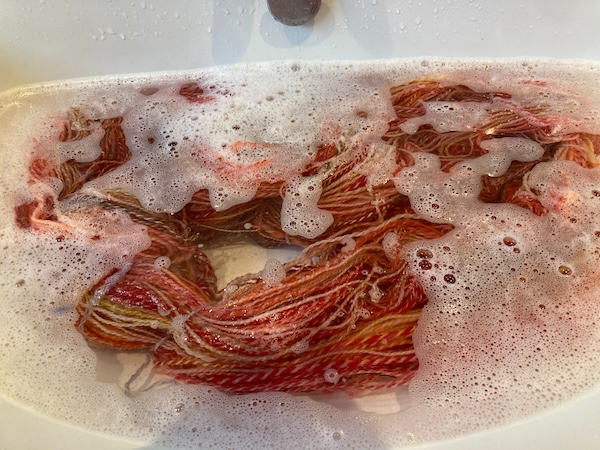
The yarn is now all dry, and waiting to be knitted up. The final yarn is 2 ply, and is 265.5 m long.

Once a couple of other knitting projects are completed, I will be knitting up this hand spun yarn into socks.
Have a wonderful day
Julie-Ann
Want to discuss my post? Feel free to chat with me on Instagram or Mastodon or Bluesky.
April Handmaiden Spinning Fibre Club
Hello friends,
Up until a few months ago, I got into a spinning rut. I didn't really have anything fun to spin, and so my yarn spinning fell by the wayside. After hearing about Handmaiden NZ's monthly fibre club, I decided to sign up for a couple of months, to see if it would help me get back into spinning. Every month Handmaiden, Amy Hughes, dyes a 100 gram braid of yarn in a new colour, and with a new fibre blend to try.
Eager to get back into spinning, I signed up for the fibre club and waited impatiently for it to arrive.
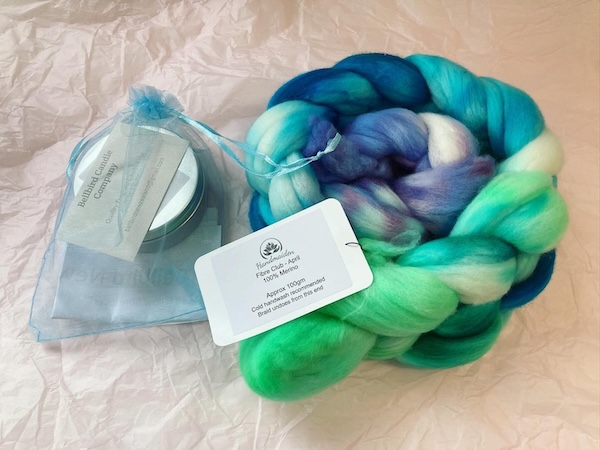
When April's fibre club showed up, and it was a soft and fluffy 100% merino braid, in pretty shades of white, green, blue, and purple, and it came with a small candle from the Bluebird Candle Company, in the scent Beautiful. The candle scent was very floral and pretty, and not too overpowering. Very excited about getting into spinning, I got to work. I unraveled the braid and split it lengthwise down the middle so I could make a two ply. In an experimental mood, I chose to spin each half braid from different ends. This would make the colours overlap in the middle.
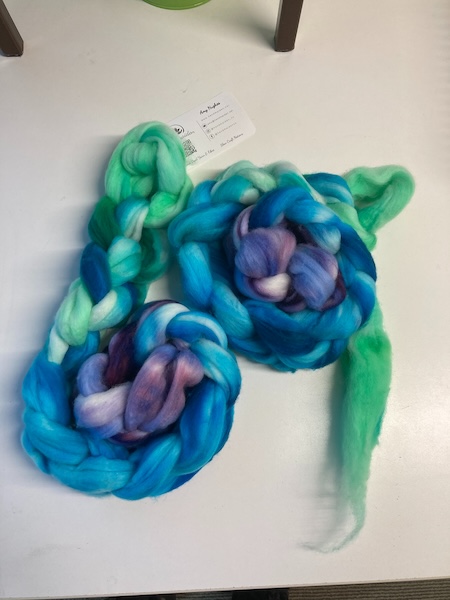
I decided to spin the braid on my trusty Majacraft Suzie Pro, with the spinning wheel set up on the middle whorls, and aimed to spin at my default width, which would end up with approximately DK yarn once plied. It didn't take very long at all to spin up both singles and then ply them.
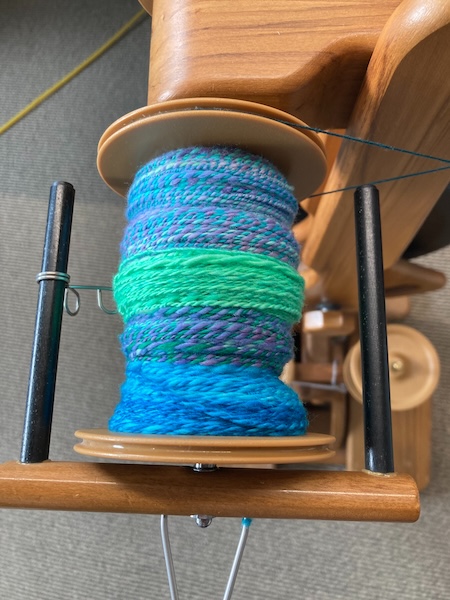
Once plied and rested, I set the yarn by washing it with wool wash. Unfortunately the wool wash we have at the moment has been making dye run, so the wash and rinse water was in shades of blue.
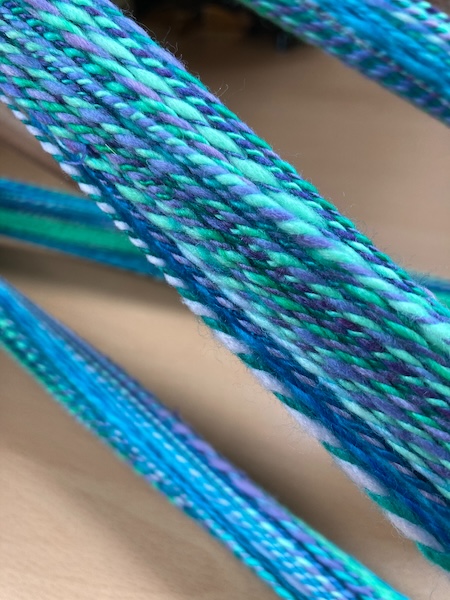

With the yarn fulled and washed, it was left to dry. I ended up with a total of 175 m of DK knit weight yarn at the end of spinning and processing. I don't know what I will do with it, but for now I'm just happy to squish it and enjoy the pretty colours. Have you been spinning anything pretty recently?
Have a wonderful day
Julie-Ann
Want to discuss my post? Feel free to chat with me on Instagram or Mastodon or Bluesky.




